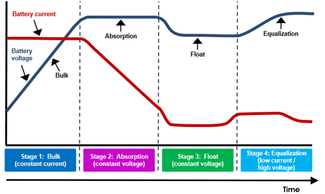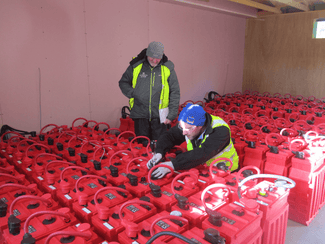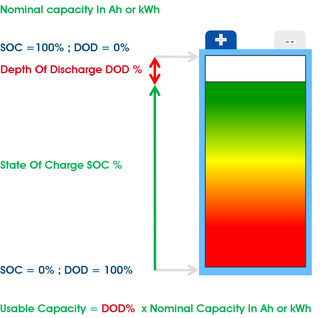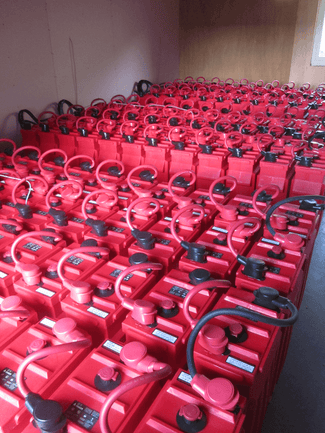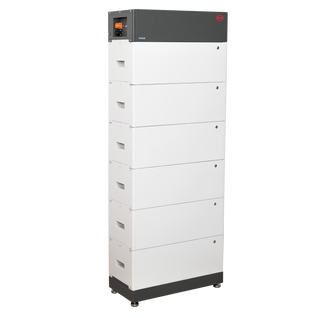Batteries may be connected together to increase capacity and form a 'battery bank'.
Series connections
Positive of one battery to Negative of the next. This increases voltage but keeps the Ah capacity the same.
Parallel connections
Positive is connected to positive and negative to negative. This increases Ah capacity but keeps the voltage the same.
A battery bank may combine both configurations: series strings of batteries are used to obtain the correct voltage; then strings are connected in parallel to increase Ah capacity of the battery bank.
If a large battery bank is needed, it is not recommended to construct the battery bank out of numerous series/parallel 12V lead acid batteries. The maximum is at around 3 (or 4 ) paralleled strings. The reason for this is that with a large battery bank like this, it becomes tricky to create a balanced battery bank. In a large series/parallel battery bank imbalance is created because of wiring and because of slight differences in battery internal resistance. This can lead to loss of efficiency, incorrect charging and premature ageing of the batteries. Instead, consider using 6V or 2 V lead acid batteries or lithium batteries.
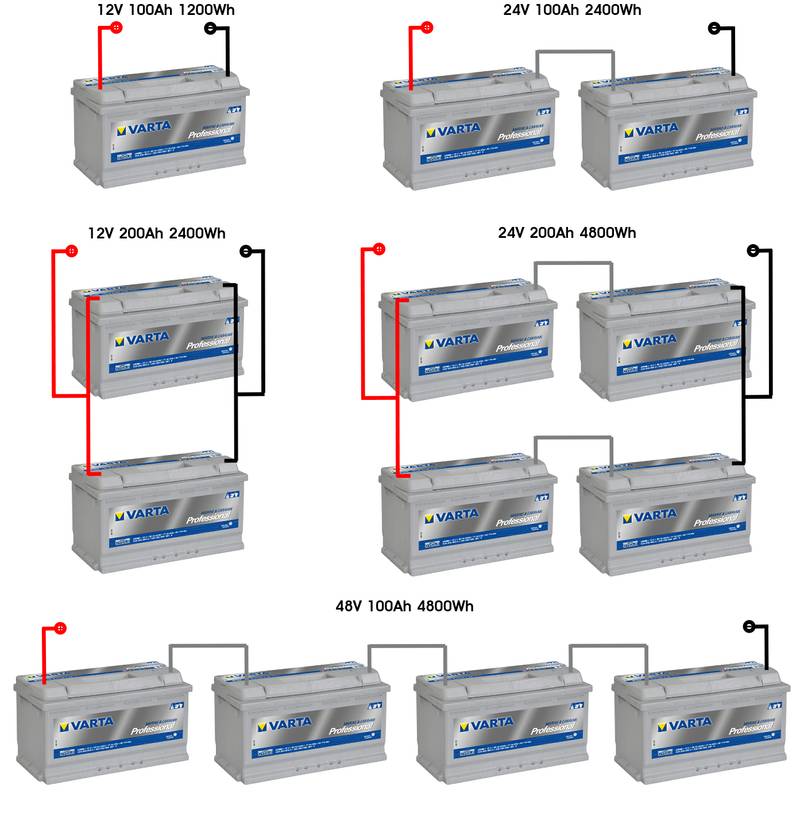
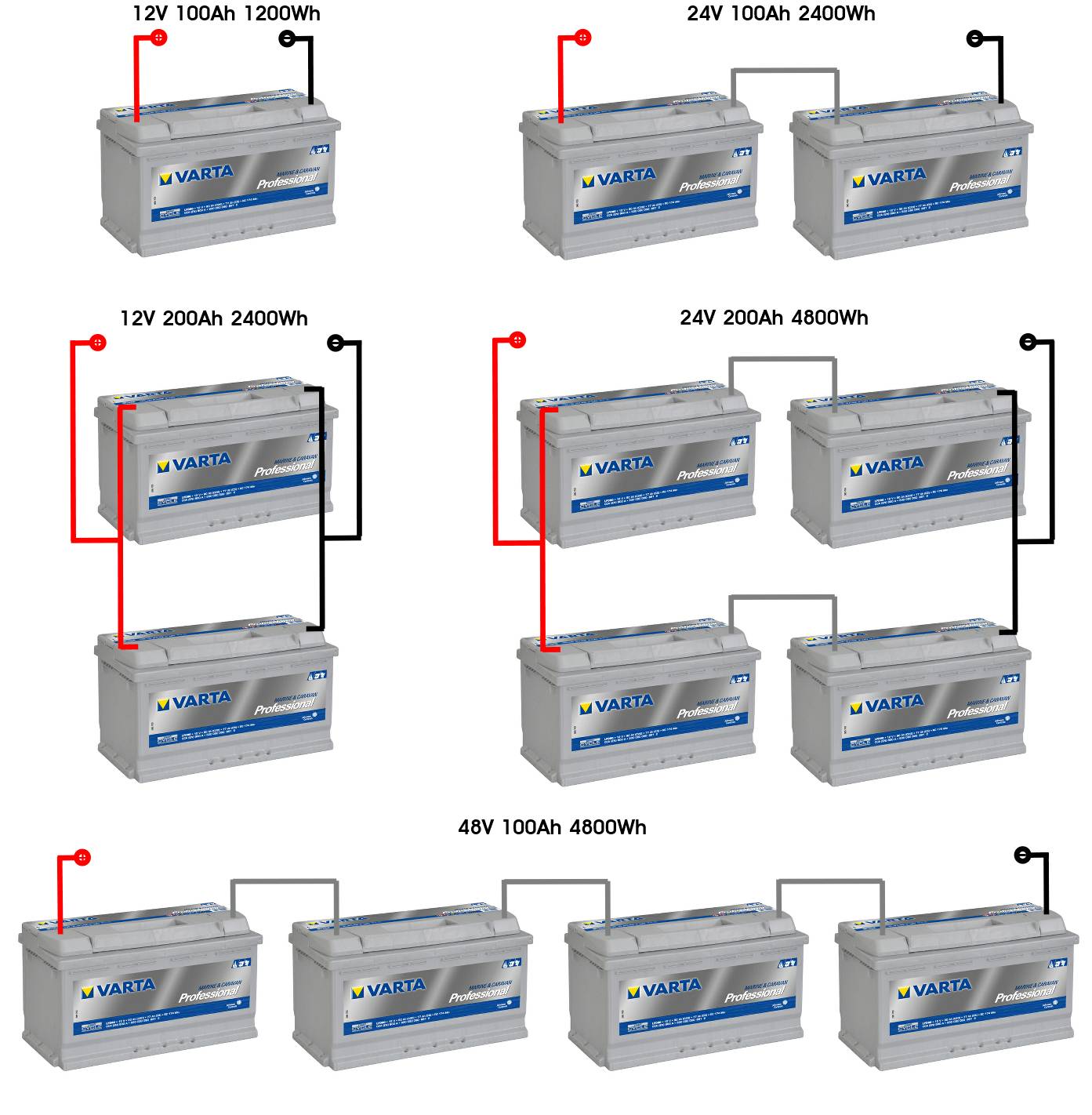
Cables
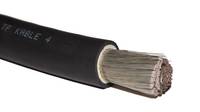
Very high currents can flow in cables used to interconnect batteries. Cables must be adequately sized to suit the maximum current drawn. Low resistance links and tight connections are essential to maintain even use of a battery bank, so good quality multi-stranded copper cable and crimped or soldered terminal lugs should be used.


Products

Battery/Inverter Cables and Connectors
Very high currents can flow in cables connecting inverter to the batteries and between the batteries. Cables must...
View collection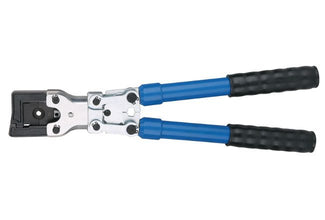
Battery/Inverter Cable Assembly Tools
Used to ensure easy and correct assembly of cable lugs to battery/inverter cables
View collection